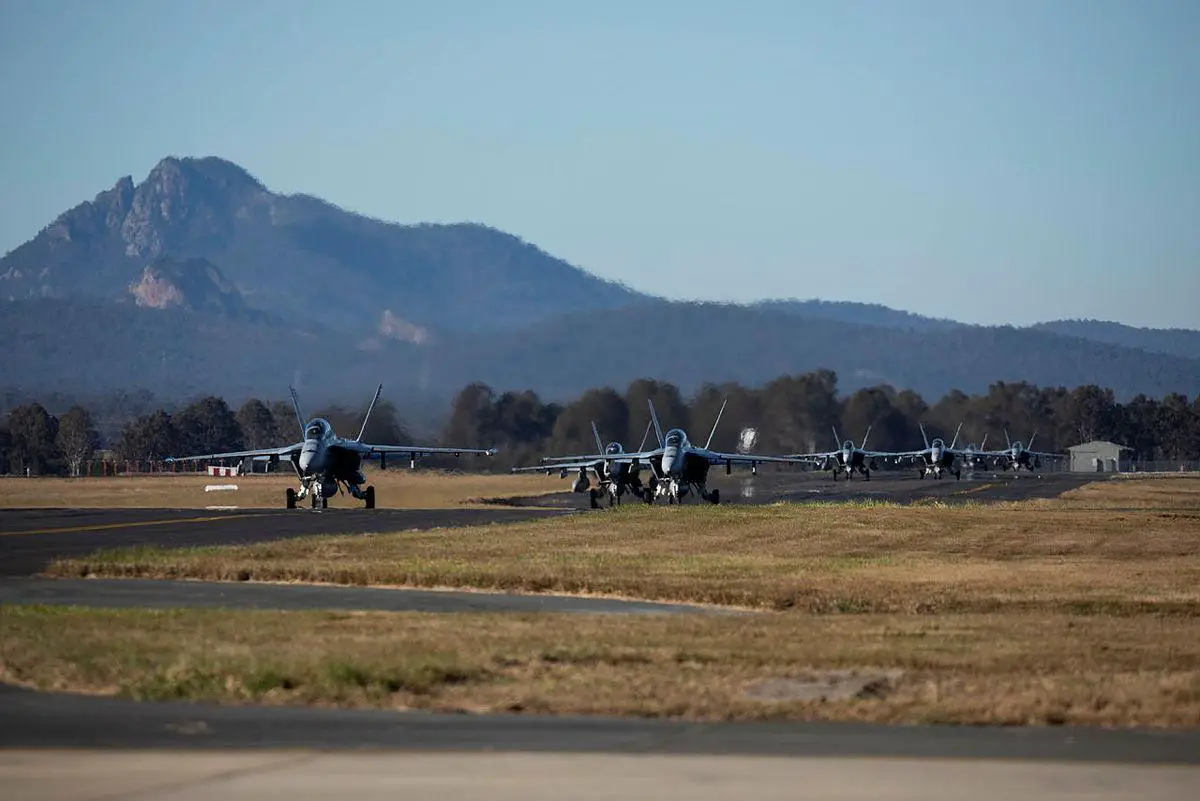The Royal Australian Air Force (RAAF) is upgrading and extending its air combat training support to bolster the RAAF’s aviation capability into the future. The new contract will employ up to 49 personnel from Raytheon Australia and an Australian subcontractor, Milskil. The majority of the training services will be delivered from RAAF Base Amberley. The EA-18G Growler and F/A-18F Super Hornet are critical to RAAF’s air combat fleet. The EA-18G Growler is an electronic attack aircraft capable of disrupting, deceiving and denying a broad range of military electronic systems, including radars and communications. The F/A-18F Super Hornet has been in-service for more than a decade and is a key air combat capability.
Director General Aerospace Combat Systems, Air Commodore Leanne Lee said,”Defence has signed a new $109.7 million training services contract for the F/A-18F Super Hornet and EA-18G Growler at RAAF Base Amberley, Queensland with Raytheon Australia. This initial five-year $109.7 million contract will deliver ground-based simulator training support including maintenance and engineering as well as aircrew training services such as instruction, courseware development and force generation tasks. This new Electronic Attack Air Combat Training Support contract will ensure our RAAF personnel retain their edge through high-quality F/A-18F Super Hornet and EA-18G Growler training. The Electronic Attack Air Combat Training Support contract contains more than 95 percent Australian industry content with direct economic benefit of more than $104 million to the Australian economy.”

The Boeing F/A-18E and F/A-18F Super Hornet are twin-engine, carrier-capable, multirole fighter aircraft variants based on the McDonnell Douglas F/A-18 Hornet. The F/A-18E single-seat and F/A-18F tandem-seat variants are larger and more advanced derivatives of the F/A-18C and D Hornet. The Super Hornet has an internal 20 mm M61 rotary cannon and can carry air-to-air missiles and air-to-surface weapons. Additional fuel can be carried in up to five external fuel tanks and the aircraft can be configured as an airborne tanker by adding an external air-to-air refueling system. On 3 May 2007, the Australian Government signed an A$2.9 billion contract to acquire 24 F/A-18Fs for the Royal Australian Air Force (RAAF) as an interim replacement for its aging F-111s.
The Boeing EA-18G Growler is a carrier-based electronic warfare aircraft, a specialized version of the two-seat F/A-18F Super Hornet. The EA-18G replaced the Northrop Grumman EA-6B Prowlers in service with the United States Navy. The Growler’s electronic warfare capability is primarily provided by Northrop Grumman. The EA-18G began production in 2007 and entered operational service with the US Navy in late 2009. Australia has also purchased twelve EA-18Gs, which entered service with the Royal Australian Air Force in 2017. The Growler has more than 90% in common with the standard Super Hornet, sharing airframe, Raytheon AN/APG-79 AESA radar and weapon systems such as the AN/AYK-22 stores management system.















